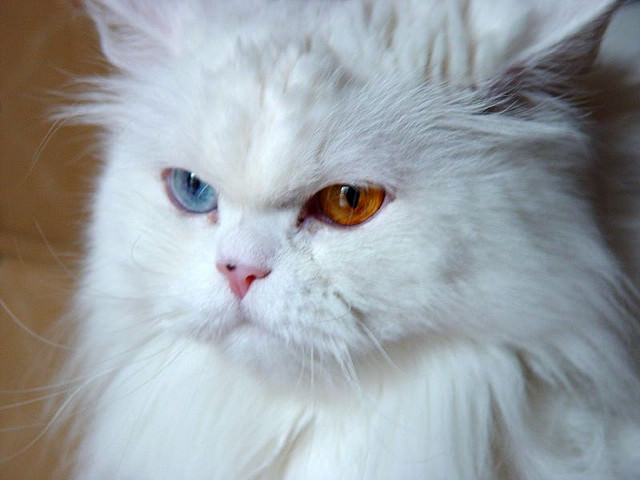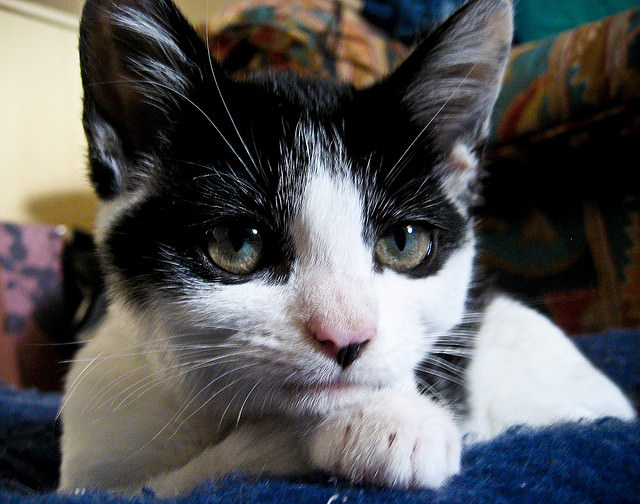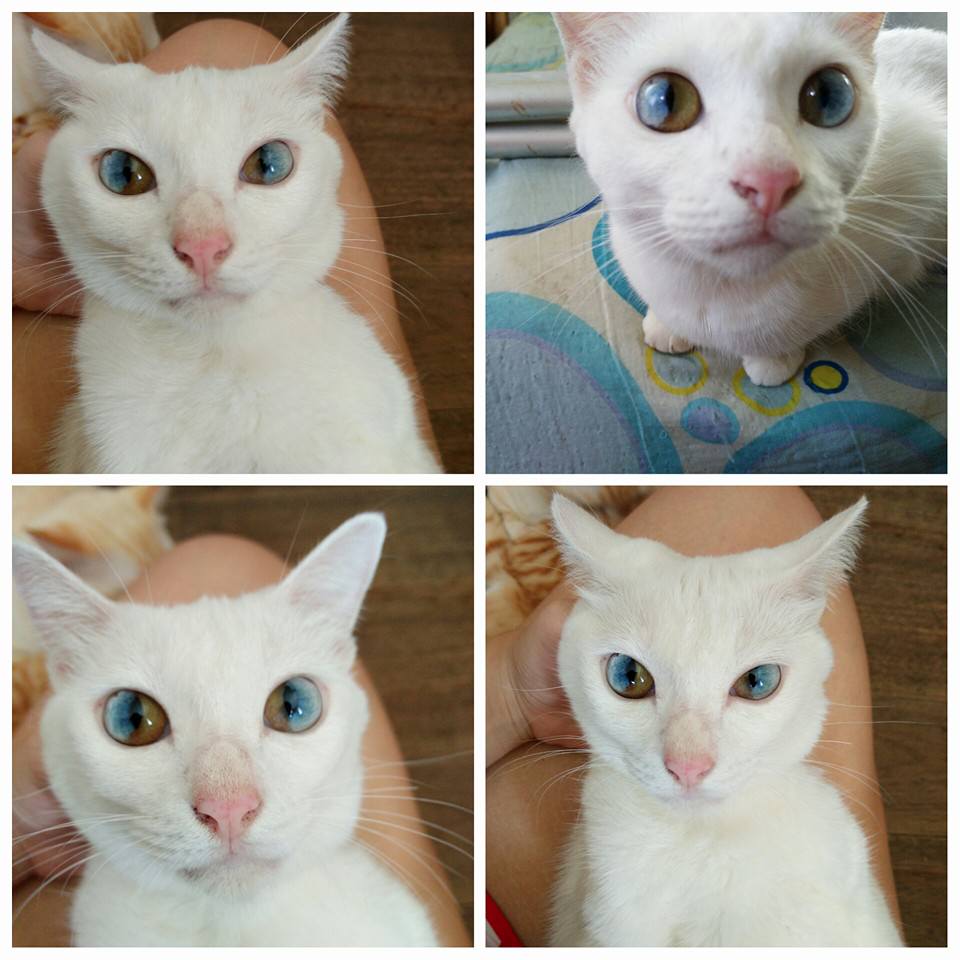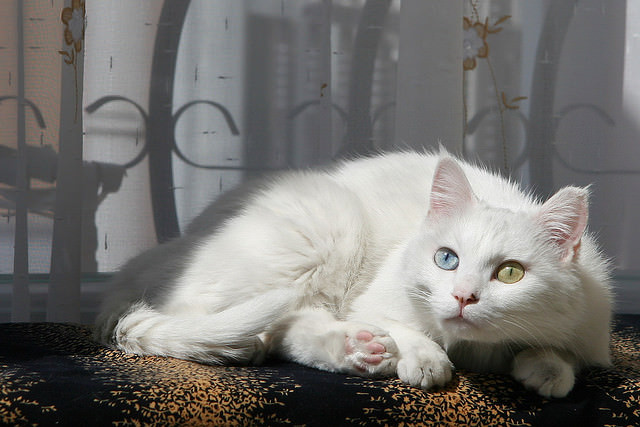It’s hard to ignore the stunning, unusual beauty of a cat who has eyes that are each a different color. It’s even more unusual for a cat to have multiple colors in one eye, but they’re out there! No matter how the colors are spread, if a cat has multiple colors in her eyes it’s a result of a condition called heterochromia. And, don’t worry, heterochromia is not a medical condition. Cats with heterochromia experience no adverse effects, even with their vision.

Image: Chris @ Flickr
Heterochromia isn’t restricted to cats. Humans are prone to it to! Some heterochromia-havin’ humans you may be familiar with are Dan Aykroyd and Kate Bosworth. David Bowie was often falsely credited with having heterochromia. In fact, one of his eyes simply appeared darker due to an injury that caused one of his pupils to stay dilated.
As you may have guessed, there are two types of heterochromia.
- Complete heterochromia is when a cat has eyes that are two independent colors– one blue eye and one green eye, for instance.
- Sectoral heterochromia is when the iris of a single eye contains two colors– so, a single eye may be split between blue and green.

Image: Still Burning via Flickr
The terms “complete heterochromia” and “sectoral heterochromia” are mouthfuls and sound like technical jargon, but really they just come from the term heterochromia iridis, which is greek for “differently colored irises”.
So how does such a strange trait happen? Well, it all has to do with a cat’s genes, which determine pigmentation. All kittens are born with blue eyes. You won’t begin to see the true color until a kitten is between 7-12 weeks old, when melanin (a pigment) begins to move into the irises. Eye color is determined by the amount of melanin that moves into the iris, and blue eyes are a result of no melanin.

Image: Ray Radlein via Flickr
The genes that cause all-white or bi-colored cats (think tuxedos) are responsible for most cases of heterochromia. Since it’s determined by genes, some breeds are more prone than others at developing the condition– most notably the Japanese Bobtail, Turkish Angora, and the Turkish Van. This condition can happen in any cat with the right genetic cocktail though.

Image: raoeang via Imgur
As a kitten matures, sometimes her genes will prevent the melanin from reaching just one of her eyes, so one of her eyes will always be blue. That’s how complete heterochromia happens.
Sectoral heterochromia happens when there’s varying concentrations of melanin spread throughout one iris. Since melanin determines the color, this can result in a single eye of several colors. Pretty awesome, right?

Image: Qiang Chen via Flickr
While multi-colored eyes are surely a sight to behold, you should seek medical attention for your kitty if her eyes begin to become multi-colored after she has matured. Healthy eye color development will be complete within the first 12 weeks of a kitten’s life. Changes in color after that may be a result of inflammation, iron deposits, or blood in your cat’s eye.
